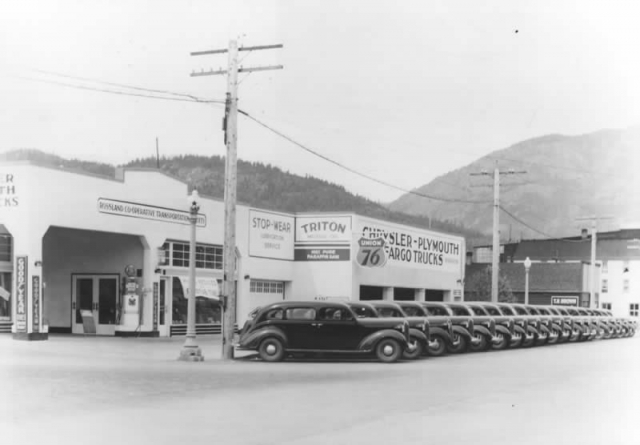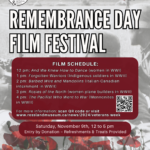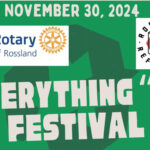TALES AND LEGENDS OF THE MOUNTAIN KINGDOM: The Rossland Cooperative Transportation Society
As Rossland revisits the idea of a 21st century carshare, Allyson Kenning offers a timely look back at an old idea that sounds strangely new. -ed.
In the summer of…um, 1992 (I’m dating myself here!), I was freshly out of highschool and not sure what to do with myself, so I started applying for jobs. A steam laundry in Glenmerry was hiring, but after taking one look at the place with my mother, I turned to her and said, “Would you blame me for not wanting to work here?” She shook her head, taking in the hideously hot working conditions and said, “No, not at all.”
The next job that came up was at the Rossland Co-op, where we as a family got our gas and had our cars serviced. I applied with my piddly little teenaged resume and was hired. It was my first “real” job and would turn out to be a great learning experience. It also had the added benefit of being a place with a bit of history to it, as was evidenced high up on the walls of the office I manned by the many black and white photos of the co-op from decades before. This place had been around a long time.
Just how long the co-op was around and how it all got started is what we’re going to explore right now. By 1927, with the exception of a few little DIY mining companies operating small scale productions, mining on a large, lucrative scale was pretty much over and done with in Rossland, and in this pre-Depression era, families were leaving town in large numbers to find work elsewhere. Our once bustling city was quickly becoming at risk of turning into a ghost town. Rossland city council needed options – and fast.
The only viable option they saw was to transform the town into a bedroom community for Trail’s smelter workers. An advertising campaign, supported by the Canadian Mining & Smelting Company (precursor to the later Cominco and current Teck) and their pledge to provide advances for workers to buy properties to build houses on. It was a win-win situation; Rossland got what it needed but so did the smelter: they were rapidly losing workers and had a hard time attracting new employees. The smelter also pledged to help Rossland with a couple of infrastructure issues, namely its water distribution problems (wooden, antiquated pipes that leaked in the summer and froze in the winter) and the issue of transportation to Trail.
Rossland’s ad campaign was, by all accounts, quite successful. According to Ron Shearer’s notes, the town saw its selling points as “A City of Pretty Homes”, with “good schools,” “excellent churches of all denominations,” a theatre, “pool and billiard halls,” “an excellent golf course”, “numerous pretty camping spots,” “natural advantages for winter sports,” “and up-to-date merchandising establishments.” Sources indicate that the bait was taken, and by the 1930s “hundreds of men” required transportation down to Trail to work.
But despite CM&S Company’s commitment to help Rossland with the transportation issue, it seemed that by the early 1930s as the Great Depression was settling in, nothing had been resolved, and the workers took it upon themselves to remedy the problem.
The CPR still had a train running between the two locations, but the service was limited, especially for those working swing or night shifts. There was also a selection of bus services but they became increasingly difficult to operate due to high costs, and they were often overcrowded and no one was guaranteed a seat.
Someone needed to take action, and that someone turned out to be a very left-wing union organizer named Jack Gordon. He’d had previous experiences with consumer co-ops and it was his suggestion that Rossland create it’s own cooperative transportation society. The idea was a hit, and it grew to become crucial in Rossland’s success as a bedroom community of Trail.
Initially, 12 men met to form the Rossland Cooperative Transportation Society, which was incorporated under the BC Co-op Act on June 29, 1932, and Jack Gordon was the first president. (Another source says it was incorporated in 1933.) The beginnings were small and modest; they purchased one five-passenger car to start with, but soon had over 150 members to transport and another seven cars were added to the fleet. By the second year, there were over 200 members and over 15 cars. They started out buying Model A Fords, and in 1936 they bought new seven-passenger cars made by Plymouth.
In Jack Gordon’s own words:
“It should be clearly understood that this fleet of cars was purchased and is maintained for this one special purpose only—to transport members (and only members) of the Society back and forth to their work each day. It is not permitted to use the cars for any other purpose.The mechanics of the operation are fairly simple, no professional chauffeurs are hired, but certain selected members of the Society, who themselves work at the plant, drives the cars back and forth. As a certain number of the members work “shift work” about 14 to 15 of the cars are required to do three trips a day.”
The society also created some jobs in Rossland, employing two full time mechanics and two full time assistants. Car parts were purchased at wholesale prices and were interchangeable between the models.
Meanwhile, Rossland continued to attract new residents, as is evidenced by the growing co-op membership. By 1948, there were over 1000 co-op members and the society had a fleet of 60 cars.
Rossland’s transportation cooperative would eventually be the longest-running in the province.
And in case you’re wondering where this venture was located, it was where the Nelson and District Credit Union now stands. The pictures on the wall of the little co-op office I used to work in are now on display inside the credit union, a hat tip to years gone by.
Sources:
1. Ron Shearer
2.http://www.uvic.ca/research/centres/cccbe/resources/galleria/stories/RosslandTransportationCoop.php
3. http://memorybc.ca/rossland-cooperative-transportation-society-fonds;rad

























